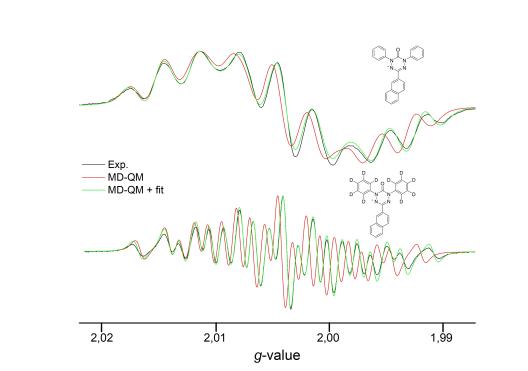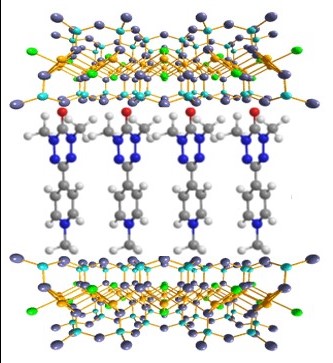Cooperativity in Organic Spin Materials and their Hybrid Systems: Steering of Magnetic Properties by Orientation of Radicals
DFG-SFB 858-project B11
We aim at designing, preparing, and characterizing novel purely organic spin systems, with the objective of realizing and maximizing ferromagnetic exchange couplings. While cooperative magnetic systems have been mostly realized by trial-and-error, our approach will be guided by predictive theoretical chemistry. The strength of magnetic exchange couplings will be maximized by optimizing the molecular building blocks, using thioxoverdazyls as well as symmetric and non-symmetric biradical systems and their mutual orientations. Further approaches will include the assembly of building blocks within porous inorganic host materials, the topochemical polymerization of verdazyl substituted polydiacetylenes and the design of polyverdazyl systems. Cooperative magnetism will be examined by temperature dependent magnetic susceptibility and field dependent magnetization measurements. We are using modern solid-state NMR and EPR experiments to characterize these materials structurally and to investigate the strengths of intermolecular magnetic exchange interactions.



Publications
Advanced Magnetic Resonance Techniques for the Structural Characterization of Aminoxyl Radicals and Their Inorganic-Organic Nanocomposite Systems, H. Eckert, Chem. Eur. J. 23, 5893-5914 (2017).
Strong Intermolecular Antiferromagnetic Verdazyl-Verdazyl Coupling in the Solid State, S. Eusterwiemann, O. Janka, T. Dresselhaus, C. Doerenkamp, M. de Oliveira Junior, C. G. Daniliuc, H. Eckert, J. Neugebauer, R. Pöttgen, A. Studer, Phys. Chem. Chem. Phys. 19, 15681-15685 (2017).
Cooperative Magnetism in Crystalline N-Aryl-substituted Verdazyl Radicals: First-Principles Predictions and Experimental Results, S. Eusterwiemann, T. Dresselhaus, C. Doerenkamp, O. Janka, O. Niehaus, A. Massolle, C. G. Daniliuc, H. Eckert, R. Pöttgen, J. Neugebauer, A. Studer, Chem. Eur. J. 23, 6069 - 6082 (2017)
Effect of the C3-Substituent on the profluorescent behavior of Verdazyl Radicals, S. Eusterwiemann, D. R. Matuschek, L. Stegemann, S. Klabunde, C. Doerenkamp, B. Wibbeling, C. G. Daniliuc, N. L. Doltsinis, C. Strassert, H. Eckert, and A. Studer, Chimia 70, 172-176 (2016).
Synthesis and characterization of inorganic-organic hybrid materials based on the intercalation of stable organic radicals into fluoromica clay, Z. Zeng, D. Matuschek, A. Studer, C. Schwickert, R. Pöttgen, H. Eckert, Dalton Trans, 42, 8585-8596 (2013).
